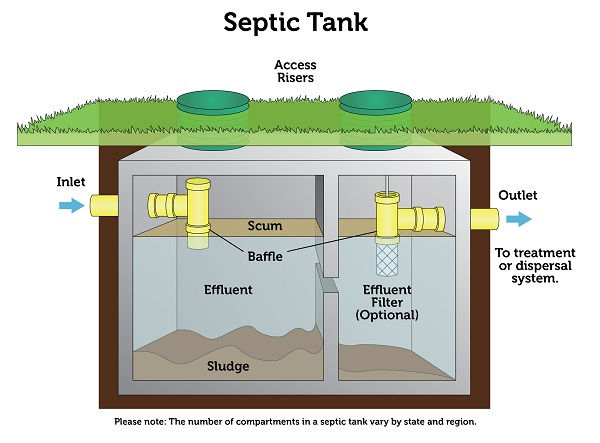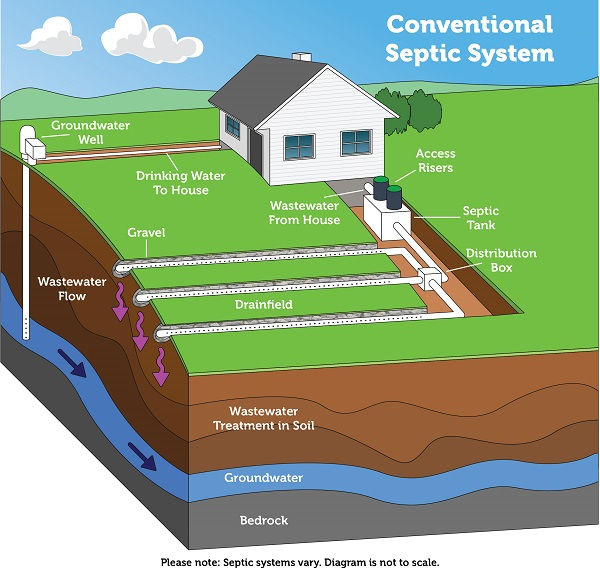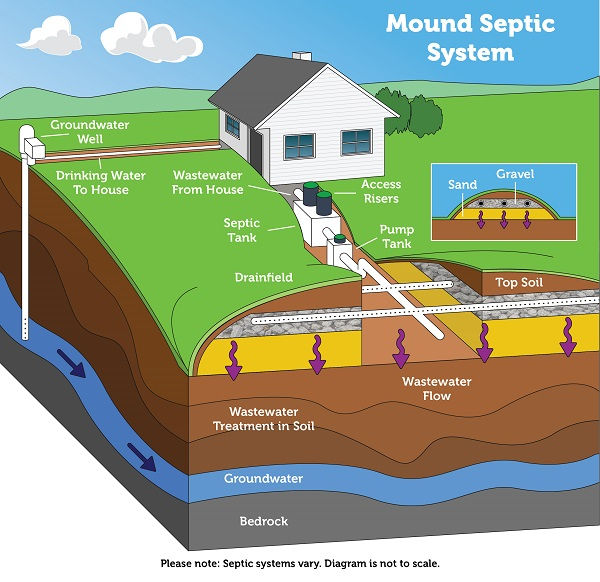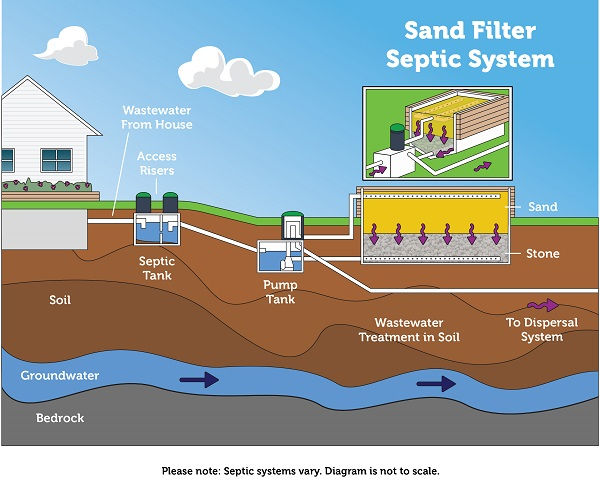

Achieving Growth
On-site Wastewater Treatment Systems
Butters Companies is a certified, licensed, expert in EPA quality systems.
Trusted Septic System Solutions for Residential and Commercial Properties
If your property isn’t connected to a municipal sewer line, you rely on an on-site wastewater treatment system. The right system keeps your home or property safe, your yard clean, and your groundwater protected. At Butter’s Company, we help homeowners, small business owners, and government entities choose, install, and maintain the best septic system for their specific site conditions. Here’s a breakdown of the most common systems available, what makes each unique, and how to know which one is right for you.

Septic Tank: The Core of Every System
A septic tank is the first stop in any on-site wastewater system. It’s a watertight tank buried underground that receives wastewater from the building(s). Inside, solids settle at the bottom (sludge), lighter materials float to the top (scum), and partially treated water—known as effluent—flows out to the next stage: the drainfield.

Low-maintenance when properly installed and pumped

Provides reliable primary treatment before water reaches the soil
Conventional System: Tried and True

A conventional septic system pairs a septic tank with a gravel or stone drainfield. After pre-treatment in the tank, the effluent moves into a network of underground trenches filled with gravel or stone. A layer of fabric keeps dirt from clogging the system. From there, water filters into the soil, where natural microbes finish the job.
Best For:
-
Properties with enough yard space
-
Soil that drains well and meets local code
Considerations:
-
Larger footprint than other systems
-
Not ideal for high water tables or tight spaces

Drip Distribution System: Shallow and Precise
Drip distribution systems use narrow tubing to distribute effluent evenly just beneath the soil surface. A pump and control system regulate delivery in timed doses, making this one of the most controlled and efficient ways to manage wastewater.

Sloped or rocky lots where trenching is tough
Shallow soils that can’t handle deeper systems

Requires power and additional components like a pump tank
More complex installation and upkeep
Mound System: For Tough Terrain

Mound systems work well when soil depth is shallow, the water table is high, or bedrock is close to the surface. Effluent is pumped into a raised sand mound that contains the drainfield. As water filters through the sand and soil, it’s naturally treated before entering the groundwater.
Best For:
-
Rural properties with poor natural drainage
-
Areas with environmental sensitivity
Considerations:
-
Requires more land and regular maintenance
-
Visually noticeable due to the raised mound

Sand Filter System: Above-Ground Flexibility
Drip distribution systems use narrow tubing to distribute effluent evenly just beneath the soil surface. A pump and control system regulate delivery in timed doses, making this one of the most controlled and efficient ways to manage wastewater.

Sloped or rocky lots where trenching is tough
Shallow soils that can’t handle deeper systems

Requires power and additional components like a pump tank
More complex installation and upkeep
Aerobic Treatment Units (ATUs): High-Tech Treatment

Aerobic treatment units bring oxygen into the septic process, speeding up the breakdown of waste and increasing the level of treatment. These mini versions of municipal systems are ideal for properties with smaller yards or soil problems.
Best For:
-
Small lots or environmentally sensitive locations
-
Homes near rivers, lakes, or wetlands
Considerations:
-
Requires power and more maintenance
-
Delivers cleaner effluent with less odor
What System Is Right for You?
Choosing a septic system isn’t just about size. Soil type, property slope, water table levels, and even how often you use your home all play a role. That’s where Butter’s Company steps in. We’ll assess your property, explain your options, and recommend the best solution—without upselling what you don’t need.
What System Is Right for You?
A poorly chosen or installed system can cost thousands in repairs and risk your family’s health. Let our experts guide you through permits, testing, installation, and long-term care.
Call us today for a no-pressure consultation. We’ll help you protect your investment and your property’s future.
